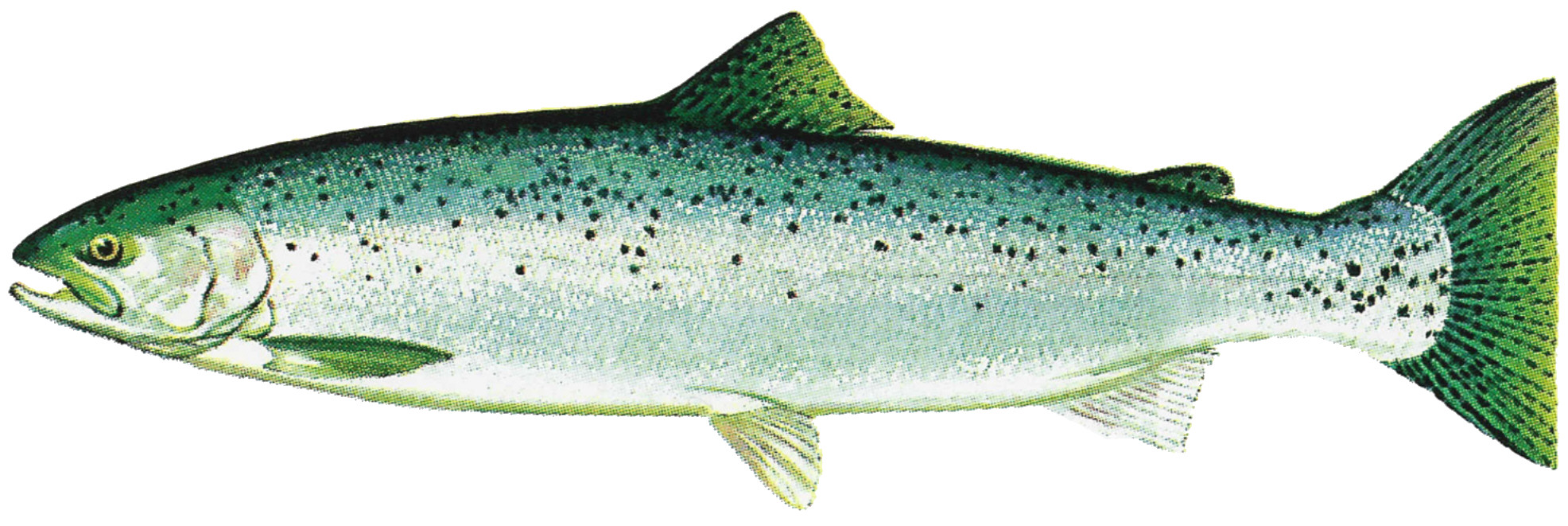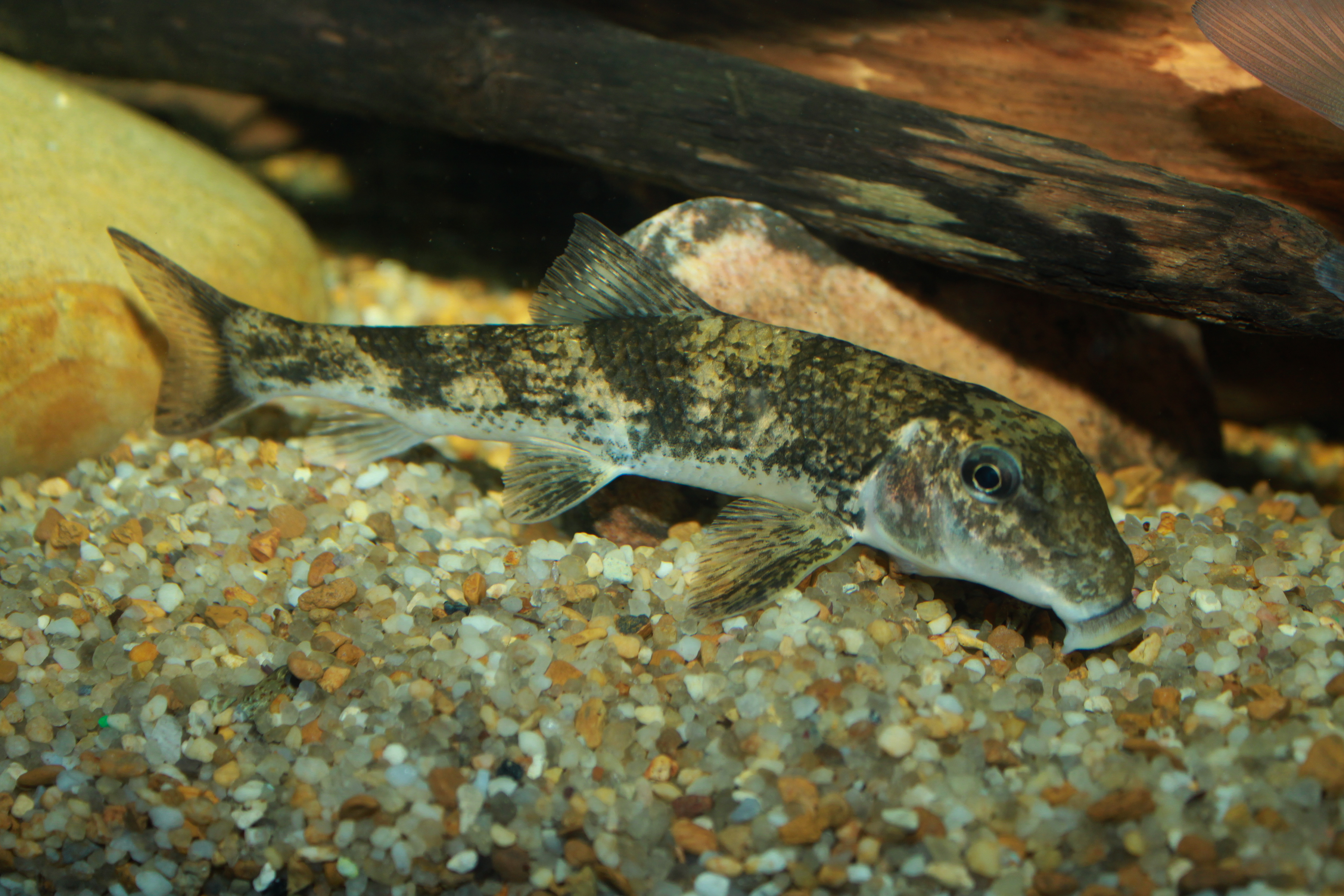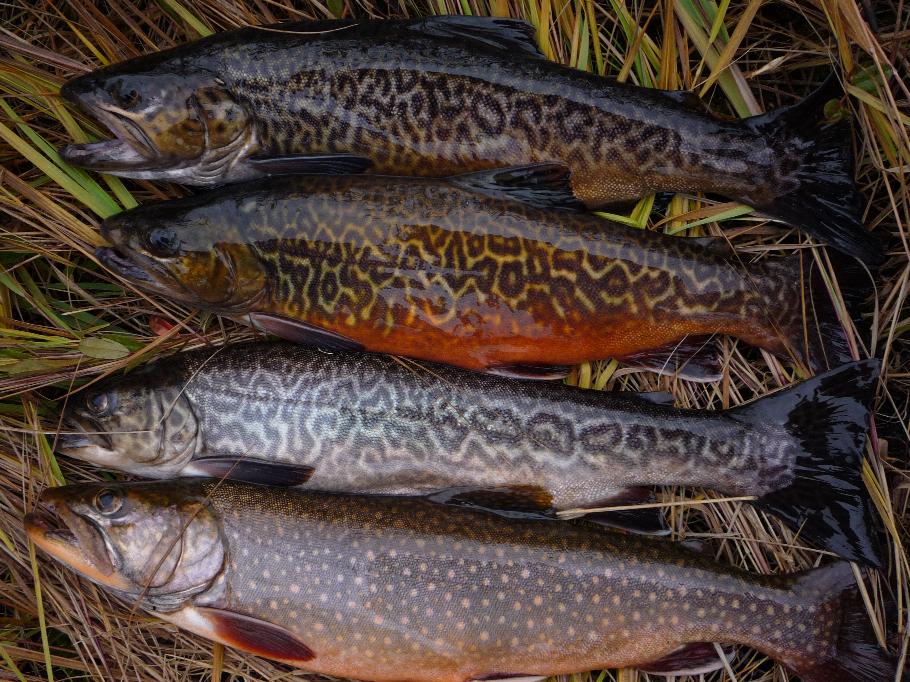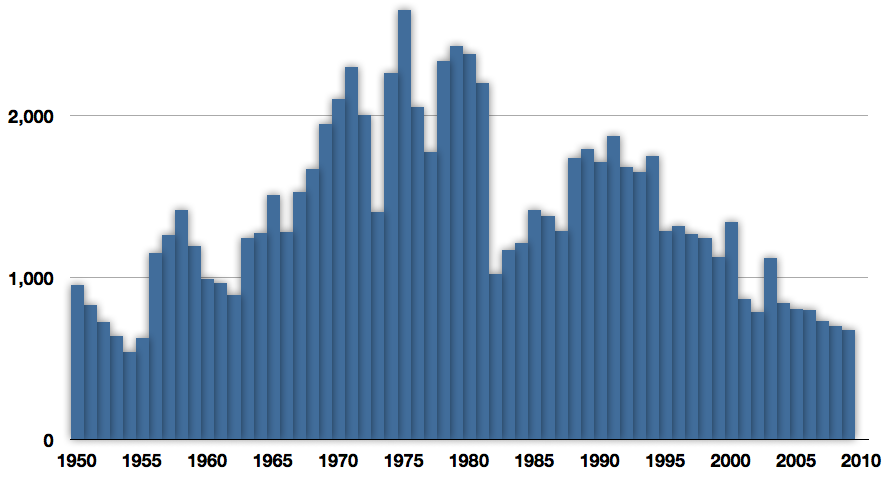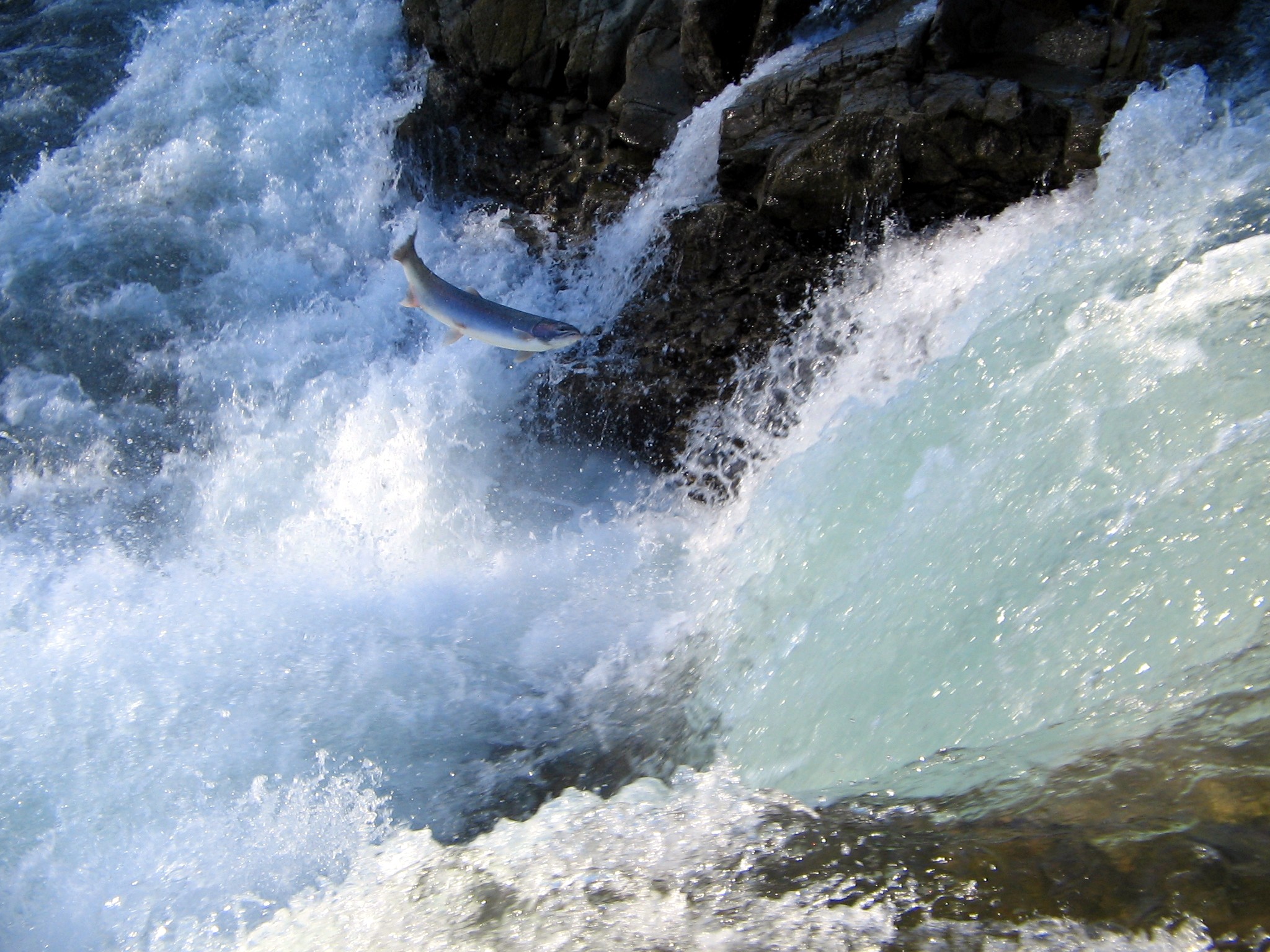|
Pentecôte River
The Pentecôte River (, ) is a river in the Côte-Nord region or the province of Quebec, Canada. It is a tributary of the Gulf of Saint Lawrence, which it enters beside the community of Rivière-Pentecôte. Location and name The Pentecôte River is an important river in the Port-Cartier–Sept-Îles Wildlife Reserve. It is in the municipality of Port-Cartier in the Sept-Rivières Regional County Municipality, Côte-Nord, Quebec. In the Innu language the river was called ''Mistecapiu'', meaning "Steep Rock". The present name may be attributed to the fact that Jacques Cartier arrived in the area on the Christian holy day of Pentecost (''Pentecôte'' is French for Pentecost). There is a reference to the river in a document by Louis Jolliet from 1685 in which he refers to a river named "Pannecoste". A 1695 map by Deshayes shows the "Rivière de la Pentecoste". In 1744 the cartographer Bellin wrote "R. Michigabiou or R. de la Pentecôte; it is also called R. Sainte Marguerite." Envi ... [...More Info...] [...Related Items...] OR: [Wikipedia] [Google] [Baidu] |
Côte-Nord
Côte-Nord (Region 09) (, ; ) is an List of regions of Quebec, administrative region of Quebec, on the Quebec-Labrador peninsula, Quebec-Labrador Peninsula, Canada. The region runs along the St. Lawrence River and then the Gulf of St. Lawrence, from Tadoussac to the limits of Labrador, leaning against the Saguenay–Lac-Saint-Jean to the west, the Côte-Nord penetrates deep into Nord-du-Québec, Northern Quebec. With the motto: ''Between nature and grandeur'', the Côte-Nord is made up of 99% public land, it is the second largest region after Nord-du-Québec, which occupies 51% of Quebec's territory. History The origins of the settlement of the Côte-Nord precede by a few millennia the population movements that began in the middle of the 19th century. Archaeology, Archaeologists tell us that the main prehistoric cultures, called "Archaic humans, archaic", were based on three sets of groups coming from the southwest, from as far away as the Great Lakes by the St. Lawrence Rive ... [...More Info...] [...Related Items...] OR: [Wikipedia] [Google] [Baidu] |
Picea Glauca
''Picea glauca'', the white spruce, is a species of spruce native to the northern temperate and boreal forests in Canada and United States, North America. ''Picea glauca'' is native from central Alaska all through the east, across western and southern/central Canada to the Avalon Peninsula in Newfoundland, Quebec, Ontario and south to Montana, North Dakota, Minnesota, Wisconsin, Michigan, Upstate New York and Vermont, along with the mountainous and immediate coastal portions of New Hampshire and Maine, where temperatures are just barely cool and moist enough to support it. There is also an isolated population in the Black Hills of South Dakota and Wyoming. It is also known as Canadian spruce, skunk spruce, cat spruce, Black Hills spruce, western white spruce, Alberta white spruce, and Porsild spruce. Description The white spruce is a large evergreen conifer which normally grows to tall, but can grow up to tall with a trunk Diameter at breast height, diameter of up to . The B ... [...More Info...] [...Related Items...] OR: [Wikipedia] [Google] [Baidu] |
Riverin River
The Riverin River () is a river in the Côte-Nord region of the province of Quebec, Canada. It is a tributary of the Gulf of Saint Lawrence. There is a small hydroelectric power plant near the mouth of the river. Location The Riverin River is in Port-Cartier, Sept-Rivières, Quebec. The river is fed by a few relatively small lakes, including Lac Riverin in the canton of Grenier. It flows southward, with many rapids. At its mouth, it flows under Quebec Route 138 and into the Saint Lawrence just north of the community of Rivière-Pentecôte. of the river basin, or 26.5%, is in the Port-Cartier–Sept-Îles Wildlife Reserve. At the mouth of the river the average annual temperature is and the average annual rainfall is . Climate models indicate that further inland the average annual temperature would be and the average annual rainfall would be . Name The Pessamit Innu, called Riverin by the Europeans, hunted and fished by the river until around 1900. The name of the river, which ... [...More Info...] [...Related Items...] OR: [Wikipedia] [Google] [Baidu] |
Aux Rochers River
Aux Rochers River (, , ''Rocky River''), is a river in Sept-Rivières Regional County Municipality, Côte-Nord, Quebec, Canada. It drains an area of . It is a tributary of the Gulf of Saint Lawrence Description The Aux Rochers River is in Port-Cartier, Sept-Rivières. It empties into the Gulf of Saint Lawrence in the town of Port-Cartier. One of its tributaries, the Gravel River (Quebec), Gravel River, is sometimes also called the Aux Rochers River. The Gravel flows south to the long Lake Walker. The Aux Rochers River proper leaves the south end of Lake Walker and flows southeast for a further . The river is hard to navigate due to a strong current. It also contains many rocks, hence its name. Some of the smaller rocks move to different places in the river each year. The lower river valley is used by southern section of the Cartier Railway, which then runs along the east shore of Lake Quatre Lieues before following the valley of the MacDonald River (Côte-Nord), MacDonald River, a ... [...More Info...] [...Related Items...] OR: [Wikipedia] [Google] [Baidu] |
Portneuf-sur-Mer, Quebec
Portneuf-sur-Mer () is a municipality in the Côte-Nord region of the province of Quebec in Canada. The municipality is located at the mouth of the Portneuf River on the St. Lawrence River. The municipality was known as Sainte-Anne-de-Portneuf prior to January 31, 2004. History Around 1500, this place was already visited by Basques whalers and sealers, who may have named it after Port-Neuf near Bayonne in Basque Country. It was mentioned by Samuel de Champlain in 1626 as "Port neuf", and François de Crespieul held his first mass there in 1683. A trading post existed there at the end of the 17th century. In 1788, a chapel was built at the mouth of the Portneuf River and dedicated to Saint Anne. Permanent settlement began in around 1845, and the community had several names over time: Saint-Georges in 1848 (after the surveyor Georges Duberger), Portneuf Mills in 1882 (due to the presence of a mill), and Hamilton Cove in 1883 (named after a forestry company). This last name was ... [...More Info...] [...Related Items...] OR: [Wikipedia] [Google] [Baidu] |
Cartier Railway
The Cartier Railway (formerly CFC and QCM) is a privately owned railway that operates of track in the Canadian province of Québec. It is operated by the Cartier Railway Company, a wholly owned subsidiary of Arcelor Mittal, formerly Québec Cartier Mining Company. The railway connects the company's huge iron ore Mining, mine at Mont Wright, Quebec, Mont-Wright in Northeastern Québec with the company's processing plant and port at Port-Cartier, formerly Shelter Bay, which is located on the northern banks of the St. Lawrence River. The Cartier Railway has 26 locomotives, over 950 ore cars, 300 utility cars, and various other pieces of Track (rail transport)#Track maintenance, maintenance equipment. The railway, along with other Northeastern Québec railways, including the Tshiuetin Rail Transportation line, the Quebec North Shore and Labrador Railway and the Arnaud Railway is completely isolated from any other railway network in North America. Although the other railways con ... [...More Info...] [...Related Items...] OR: [Wikipedia] [Google] [Baidu] |
Rainbow Trout
The rainbow trout (''Oncorhynchus mykiss'') is a species of trout native to cold-water tributary, tributaries of the Pacific Ocean in North America and Asia. The steelhead (sometimes called steelhead trout) is an Fish migration#Classification, anadromous (sea-run) form of the coastal rainbow trout or Columbia River redband trout that usually returns to freshwater to Spawn (biology), spawn after living two to three years in the ocean. Adult freshwater stream rainbow trout average between , while lake-dwelling and anadromous forms may reach . Coloration varies widely based on subspecies, forms, and habitat. Adult fish are distinguished by a broad reddish stripe along the lateral line, from gills to the tail, which is most vivid in breeding males. Wild-caught and Fish hatchery, hatchery-reared forms of the species have been transplanted and introduced for food or sport in at least 45 countries and every continent except Antarctica. Introductions to locations outside their nativ ... [...More Info...] [...Related Items...] OR: [Wikipedia] [Google] [Baidu] |
Catostomidae
The Catostomidae are the suckers of the order (biology), order Cypriniformes, with about 78 species in this family (biology), family of freshwater fishes. The Catostomidae are almost exclusively native to North America. The only exceptions are ''Catostomus catostomus,'' found in both North America and Russia, and ''Myxocyprinus asiaticus'' found only in China. In the Ozarks they are a common food fish and a festival is held each year to celebrate them. The bigmouth buffalo, ''Ictiobus cyprinellus,'' can reach an age up to 127 years, making it the oldest known freshwater teleost by more than 50 years. Description and biology The mouths of these fish are most commonly located on the underside of their head (Fish anatomy#Head, subterminal), with thick, fleshy lips. Most species are less than in length, but the largest species (''Ictiobus'' and ''Myxocyprinus'') can surpass . They are distinguished from related fish by having a long pharynx, pharyngeal bone in the throat, containi ... [...More Info...] [...Related Items...] OR: [Wikipedia] [Google] [Baidu] |
Brook Trout
The brook trout (''Salvelinus fontinalis'') is a species of freshwater fish in the char genus ''Salvelinus'' of the salmon family Salmonidae native to Eastern North America in the United States and Canada. Two ecological forms of brook trout have been recognized by the US Forest Service. One ecological form is long-lived potamodromous populations in Lake Superior known as coaster trout or coasters. The second ecological form is the short-living predaceous anadromous populations which are found in northern lakes and coastal rivers from Long Island to Hudson Bay, which are referred to as salters. In parts of its range, it is also known as the eastern brook trout, speckled trout, brook char (or charr), squaretail, brookie, or mud trout, among others. Adult coaster brook trout are capable of reaching sizes over 2'' ''feet in length and weigh up to 6.8'' ''kg (15'' ''lb), whereas adult salters average between 6 and 15'' ''inches in length and weigh between 0. ... [...More Info...] [...Related Items...] OR: [Wikipedia] [Google] [Baidu] |
American Eel
The American eel (''Anguilla rostrata'') is a facultative catadromous eel found on the eastern coast of North America. Anguillidae, Freshwater eels are fish belonging to the Elopomorpha, elopomorph superorder, a group of Phylogenetics, phylogenetically ancient teleosts. The American eel has a slender, supple, snake-like body that is covered with a mucus layer, which makes the eel appear to be naked and slimy despite the presence of minute Fish scale, scales. A long dorsal fin runs from the middle of the back and is continuous with a similar ventral fin. Pelvic fins are absent, and relatively small pectoral fin, pectoral fins can be found near the midline, followed by the head and gill covers. Variations exist in coloration, from olive green, brown shading to greenish-yellow and light gray or white on the belly. Eels from clear water are often lighter than those from dark, Blackwater river, tannic acid streams. The eel lives in fresh water and estuaries and only leaves these habi ... [...More Info...] [...Related Items...] OR: [Wikipedia] [Google] [Baidu] |
Rainbow Smelt
The rainbow smelt (''Osmerus mordax'') is a North American species of fish of the family (biology), family Osmeridae. Walleye, trout, and other larger fish prey on these smelt. The rainbow smelt prefer juvenile cisco (fish), ciscoes, zooplankton such as Calanoida, calanoid copepods (''Leptodiaptomus ashlandi'', ''Leptodiaptomus minutus, L. minutus'', ''Leptodiaptomus sicilis, L. sicilis''), and other small organisms, but are aggressive and will eat almost any fish they find. They are anadromous spring spawners and prefer clean streams with light flow and light siltation. The rainbow smelt face several barriers. They are weak swimmers and struggle to navigate fish ladders preventing them from making it past dams to the headwater streams where they spawn. The rise in erosion and dams helped to decimate the smelt population in the 1980s. There are currently plans to try to reduce damming and to help control erosion. Description The body of the rainbow smelt is slender and cylindric ... [...More Info...] [...Related Items...] OR: [Wikipedia] [Google] [Baidu] |
Anadromous
Fish migration is mass relocation by fish from one area or body of water to another. Many types of fish migrate on a regular basis, on time scales ranging from daily to annually or longer, and over distances ranging from a few metres to thousands of kilometres. Such migrations are usually done for better feeding or to reproduce, but in other cases the reasons are unclear. Fish migrations involve movements of schools of fish on a scale and duration larger than those arising during normal daily activities. Some particular types of migration are ''anadromous'', in which adult fish live in the sea and migrate into fresh water to spawn; and ''catadromous'', in which adult fish live in fresh water and migrate into salt water to spawn. Marine forage fish often make large migrations between their spawning, feeding and nursery grounds. Their movements are associated with ocean currents and with the availability of food in different areas at different times of the year. The migratory ... [...More Info...] [...Related Items...] OR: [Wikipedia] [Google] [Baidu] |


